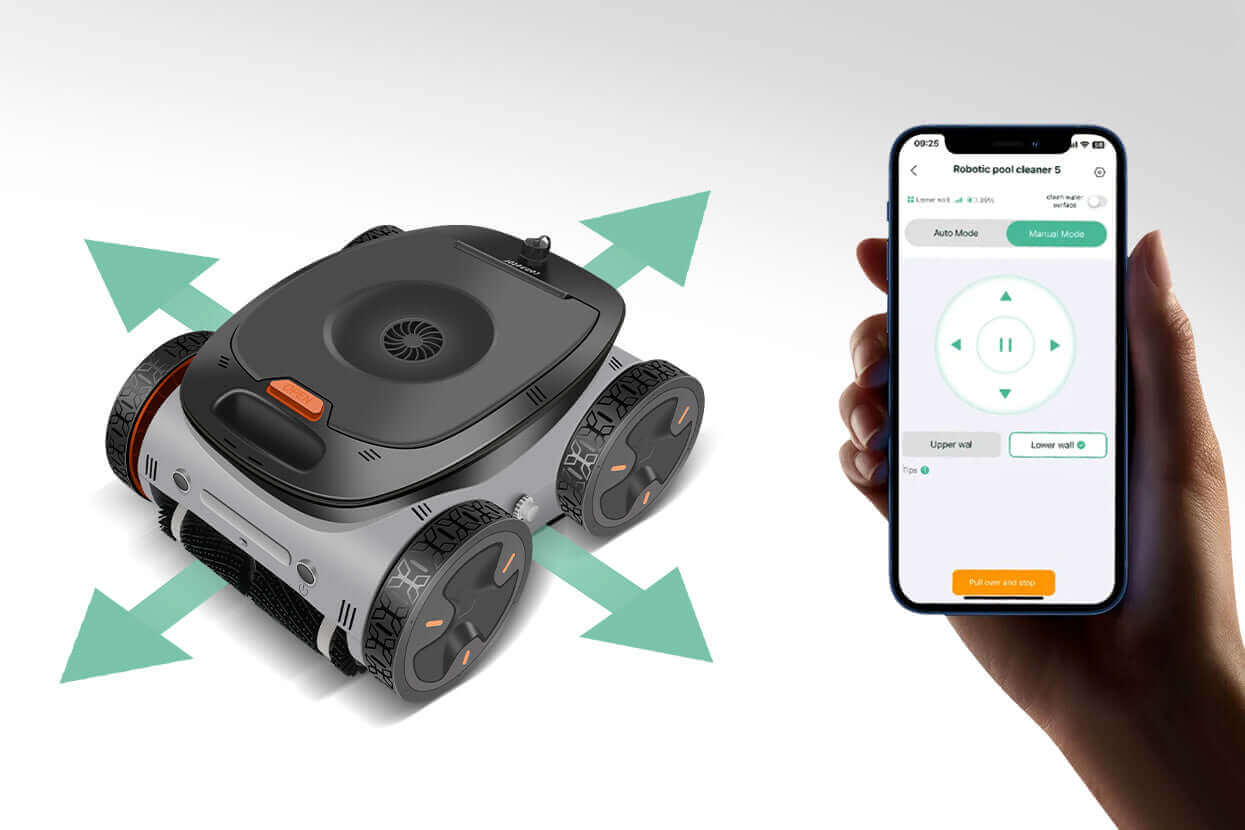When was the last time you calculated how much your household cleaning actually costs you? Not just in terms of cleaning products and equipment, but in the most valuable currency you possess—your time.
Most of us instinctively treat cleaning as a necessary evil rather than an economic activity. We compare prices of cleaning products, perhaps splurge on a nice vacuum, but rarely quantify the hours we spend maintaining our living spaces. Yet when we examine cleaning through an economic lens, a fascinating and often surprising picture emerges—one that challenges conventional wisdom about what constitutes "saving money" when it comes to household maintenance.
The True Economics of Clean: Beyond Dollar Signs
Let's start with some sobering statistics. According to the Bureau of Labor Statistics, the average American spends approximately 6 hours per week on household cleaning activities. That's 312 hours per year—equivalent to nearly 8 full work weeks. Put another way, you're spending the equivalent of almost two months of full-time work annually just keeping your living space clean.
What's that time worth? If you earn the U.S. median hourly wage of approximately $27, those cleaning hours represent $8,424 of your time each year. Even at minimum wage, we're talking about thousands of dollars worth of labor.
This isn't just an abstract calculation. Behavioral economists call this concept "opportunity cost"—what you give up to pursue a particular activity. Every hour spent cleaning is an hour not spent on:
- Professional advancement
- Quality time with family and friends
- Exercise and health maintenance
- Creative pursuits and personal growth
- Rest and recovery
These opportunity costs extend beyond mere time. Research from the University of California found that people who perceive themselves as time-constrained experience significantly higher stress levels, poorer sleep quality, and reduced life satisfaction. The psychological burden of household maintenance contributes measurably to this time pressure.
The Automation Equation: When Robots Make Financial Sense
Given these hidden costs, household cleaning automation begins to look less like a luxury and more like a rational economic decision. Let's run the numbers on some common cleaning tasks:
Floor Cleaning Economics
Traditional vacuuming and mopping of a typical home requires approximately 3 hours weekly. At the median wage, that's $81 of your time each week, or $4,212 annually.
A quality robotic vacuum costs between $300-$800, with an expected lifespan of 4-5 years. Even accounting for electricity and occasional maintenance, the annual cost ranges from $100-$250. The robot handles about 80% of routine floor cleaning, reducing your personal labor to periodic deep cleaning.
Annual savings: Approximately $3,200 of your time, minus the cost of the robot.
Window Cleaning Mathematics
Cleaning exterior windows on a typical home can take 4-6 hours and often requires precarious ladder work. At the median hourly value, that's $108-$162 of your time for each cleaning session. Most households clean exterior windows 3-4 times annually, totaling $432-$648 worth of time.
A robotic window cleaner like the SmartPro UltraClean costs $300-$500 with a similar 4-5 year lifespan. The annual cost averages $75-$125, and it completely eliminates the safety risks of ladder work.
Annual savings: $307-$523 of your time, plus incalculable safety benefits.
Pool Maintenance Arithmetic
Pool owners spend an average of 3-5 hours weekly on maintenance during swimming season (roughly 20 weeks in most climates). At median wage, that's $1,620-$2,700 of your time annually, plus $800-$1,200 in chemicals and utilities.
A Hydro-Puls Robotic Pool Cleaner costs $500-$1,200 with a 5-8 year lifespan. Annual costs including electricity average $100-$250. These devices reduce manual maintenance by approximately 70%, while their efficient cleaning actually reduces chemical and heating costs by improving circulation.
Annual savings: $1,134-$1,890 of your time, plus $200-$400 in reduced chemical and energy costs.
Beyond Money: The Qualitative Benefits of Outsourcing Cleaning
The economics make a compelling case for cleaning automation, but the benefits extend far beyond dollars and cents:
Consistency Transforms Experience
Traditional cleaning creates cycles of deterioration and restoration—spaces become increasingly dirty until we clean them, then gradually decline again. This pattern affects our daily experience of our homes.
Automated maintenance creates consistency. Robotic vacuums that run daily maintain a consistent baseline of cleanliness rather than allowing dirt to accumulate. Pool robots that operate regularly prevent algae and debris buildup rather than addressing it after it becomes problematic.
This consistency doesn't just look better—it fundamentally changes how we experience our spaces psychologically.
Mental Bandwidth Recovery
Perhaps the most significant benefit comes in the form of cognitive unburdening. Harvard researchers studying the psychological effects of household management found that it wasn't just the time spent cleaning that created stress—it was the mental bandwidth occupied by planning, remembering, and worrying about cleaning tasks.
Automated solutions reduce this cognitive load substantially. The psychological relief of knowing your floors are being maintained or your pool is being cleaned without your intervention represents a benefit that extends far beyond the time saved.
Relationship Harmony
According to a survey by the Council on Contemporary Families, disagreements about household labor rank among the top three sources of relationship conflict. Automated cleaning solutions don't just save time—they can literally save relationships by removing a significant source of tension.
When cleaning shifts from a negotiated responsibility to an automated background process, couples report measurable improvements in relationship satisfaction and communication quality.
The Decision Matrix: When to Automate vs. DIY
Not all cleaning tasks are created equal when it comes to automation potential. Here's a framework for evaluating which cleaning activities deliver the highest return on investment when automated:
High-ROI Automation Candidates:
Repetitive maintenance tasks: Activities that occur frequently and change little from session to session offer the highest automation value. Floor cleaning, pool maintenance, and lawn care fall into this category.
Safety-risk activities: Tasks that involve physical risk, such as exterior window cleaning or gutter maintenance, deliver exceptional value when automated because they eliminate both time costs and safety concerns.
High-resistance activities: Cleaning tasks you personally find unpleasant or consistently procrastinate on offer psychological returns beyond time savings. If you dread pool cleaning or bathroom scrubbing, automating these specific tasks may deliver disproportionate wellbeing benefits.
Time-intensive activities: Tasks that consume substantial time relative to their complexity are natural candidates for automation. Pool maintenance and lawn care typically offer excellent time-to-complexity ratios for automation.
Lower-ROI Automation Candidates:
Infrequent specialized tasks: Deep cleaning activities that occur quarterly or annually typically don't justify dedicated automation solutions.
Variable-condition tasks: Cleaning activities that require significant judgment and adaptation to changing conditions generally don't automate well yet. Decluttering and organizing fall into this category.
Low time-investment tasks: Quick cleaning activities that take just minutes to complete manually may not justify the cost and complexity of automation solutions.
The Hybrid Approach: Optimizing Your Cleaning Economics
The most effective approach for most households isn't all-or-nothing but rather a strategic hybrid of automation, outsourcing, and selective DIY cleaning:
Tier 1: Automate Routine Maintenance
Deploy robotic solutions for consistent background maintenance:
- Robotic vacuums for daily floor cleaning
- Robotic pool cleaners for regular pool maintenance
- Automated window cleaners for exterior glass
- Programmable irrigation systems for lawn care
These solutions maintain baseline cleanliness with minimal oversight, dramatically reducing your personal time investment while maintaining consistent standards.
Tier 2: Outsource Specialized Tasks
For tasks that can't be effectively automated but consume significant time or expertise, consider professional services:
- Quarterly deep cleaning services
- Annual carpet cleaning
- Seasonal gutter maintenance
- Specialized upholstery cleaning
When evaluating these services, calculate the true value of your time. If a service costs $150 but saves you 5 hours valued at $27/hour, you're effectively "earning" $135 by outsourcing.
Tier 3: Strategic DIY
Reserve your personal cleaning time for activities where:
- You derive genuine satisfaction from the process
- The activity requires significant judgment or personalization
- The economics don't justify automation or outsourcing
This might include organizing personal items, maintaining special collections, or seasonal decorating—tasks where your personal touch adds value beyond mere cleanliness.
The Psychological Adjustment: Overcoming Cleaning Guilt
Even with compelling economics, many people struggle with the psychological transition from DIY to automated cleaning. Cultural messaging about self-sufficiency, work ethic, and frugality can create what psychologists call "automation guilt"—the feeling that relying on devices or services for cleaning is somehow lazy or indulgent.
Recognizing this phenomenon is the first step to addressing it. Consider:
- Value clarity: Would you rather be known as an excellent house cleaner or for achievements in your career, relationships, or personal development?
- Gender expectation awareness: Women in particular often face implicit social pressure around household management. Recognize when gender expectations, not economic rationality, drive your cleaning decisions.
- Redefining productivity: Using automation strategically isn't about avoiding work—it's about reallocating your limited time to higher-value activities.
- Opportunity focus: Instead of thinking about what you're "giving up" by automating cleaning, focus on what you're gaining—whether that's family time, career development, or simply reduced stress.
The Future of Clean: Where We're Headed
The economics of cleaning automation continue to improve as technology advances. Current trajectories suggest several emerging developments:
Integration and orchestration: Rather than standalone devices, future cleaning systems will coordinate across multiple platforms. Your smart home system will schedule your window cleaning robot based on weather forecasts and deploy your vacuum after entertaining guests.
Adaptive intelligence: Next-generation cleaning automation will adjust to your specific needs and preferences, learning which areas need extra attention and which cleaning patterns you prefer.
Resource optimization: Future systems will minimize water, energy, and cleaning agent usage through precise application and scheduling, further improving the economic and environmental equation.
Supplemental rather than replacement roles: The most significant trend is the evolution toward human-machine collaboration rather than wholesale replacement of human cleaning. Automation handles baseline maintenance while humans provide judgment, customization, and final touches.
Making the Transition: Your Personal Action Plan
If you're convinced by the economic case for cleaning automation but unsure how to begin, consider this stepped approach:
- Conduct a time audit: Track exactly how much time you spend on different cleaning activities for two weeks. Knowing precisely where your hours go will help target your first automation investments.
- Calculate your personal hourly value: Be realistic about what your time is worth, considering both current earnings and long-term potential if you redirected cleaning hours to career development.
- Start with high-ROI solutions: Begin with the cleaning tasks that consume the most time relative to their complexity. For most households, this means floor cleaning, followed by specialized tasks like pool maintenance or window cleaning.
- Measure the results: After implementing automation, track both the time saved and any changes in your stress levels, home satisfaction, and relationship dynamics.
- Reinvest saved time deliberately: The ultimate ROI on cleaning automation comes from how you use the reclaimed hours. Be intentional about directing this time toward high-value activities rather than letting it dissipate.
The Bottom Line: Cleaning as an Economic Decision
When we move beyond viewing cleaning as merely a domestic chore and recognize it as an economic activity with real costs, the decision framework changes dramatically. For most households, strategic automation of routine cleaning delivers exceptional returns—not just in money saved, but in life quality improved.
The question isn't whether you can afford cleaning automation. Given the true value of your time, the more relevant question might be whether you can afford not to automate.
What cleaning tasks consume most of your time? Have you tried automating any aspects of your cleaning routine? Share your experiences in the comments below!




Leave a comment
This site is protected by hCaptcha and the hCaptcha Privacy Policy and Terms of Service apply.